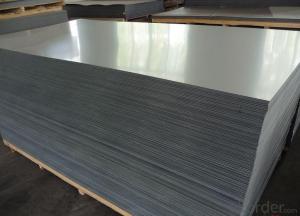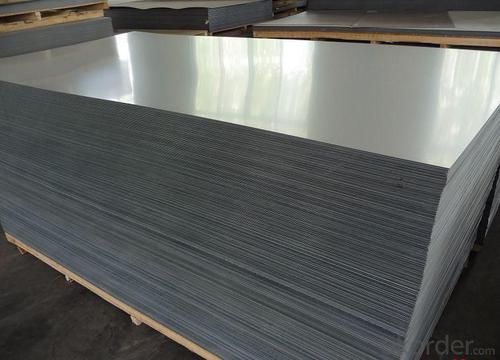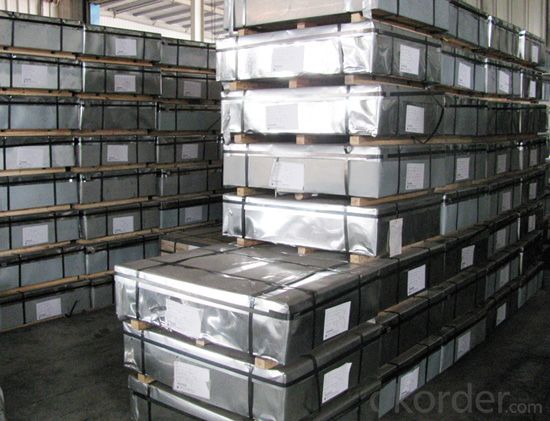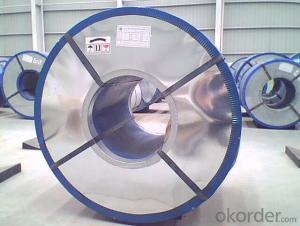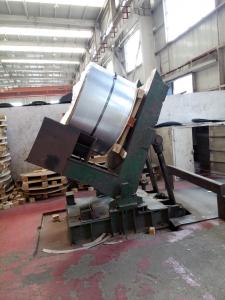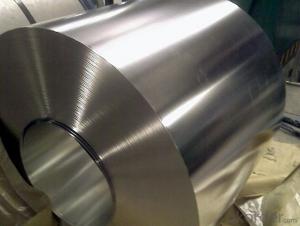Electrolytic Tinplate in Sheets for Tin Cans Making
- Loading Port:
- Tianjin
- Payment Terms:
- TT OR LC
- Min Order Qty:
- 25 m.t
- Supply Capability:
- 7000 m.t/month
OKorder Service Pledge
OKorder Financial Service
You Might Also Like
1.Structure of Electrolytic Tinplate in Sheets for Tin Cans Making Description
Electrolytic Tin Plate Coils and Sheets for Foods Metal Packaging, is one thin steel sheet with a coating of tin applied by electrolytic deposition. Tinplate made by this process is essentially a sandwich in which the central core is strip steel. This core is cleaned in a pickling solution and then fed through tanks containing electrolyte, where tin is deposited on both sides. As the strip passes between high-frequency electric induction coils, it is heated so that the tin coating melts and flows to form a lustrous coat.
2.Main Features of the Electrolytic Tinplate in Sheets for Tin Cans Making
Appearance – Electrolytic Tin Plate is characterized by its beautiful metallic luster. Products with various kinds of surface roughness are produced by selecting the surface finish of the substrate steel sheet.
Paintability and printability – Electrolytic Tin Plates have excellent paintability and printability. Printing is beautifully finished using various lacquers and inks.
Formability and strength – Electrolytic Tin Plates have got very good formability and strength. By selecting a proper temper grade, appropriate formability is obtained for different applications as well as the required strength after forming.
Corrosion resistance – Tinplate has got good corrosion resistance. By selecting a proper coating weight, appropriate corrosion resistance is obtained against container contents. Coated items should meet 24 hour 5 % salt spray requirement.
Solderability and weldability – Electrolytic Tin Plates can be joined both by soldering or welding. These properties of tinplate are used for making various types of cans.
Hygienic – Tin coating provides good and non toxic barrier properties to protect food products from impurities, bacteria, moisture, light and odours.
Safe – Tinplate being low weight and high strength makes food cans easy to ship and transport.
Eco friendly – Tinplate offers 100 % recyclability.
Tin is not good for low temperature applications since it changes structure and loses adhesion when exposed to temperatures below – 40 deg C.
3.Electrolytic Tinplate in Sheets for Tin Cans Making Images
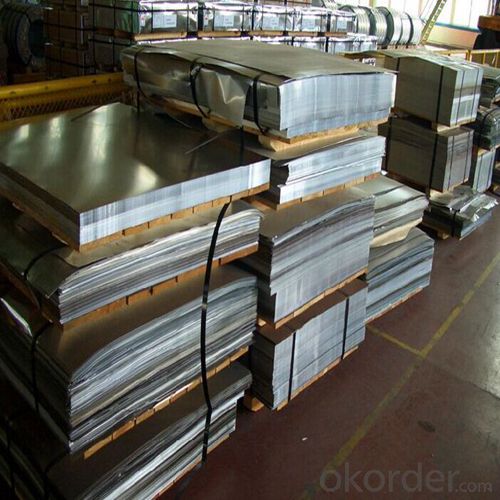
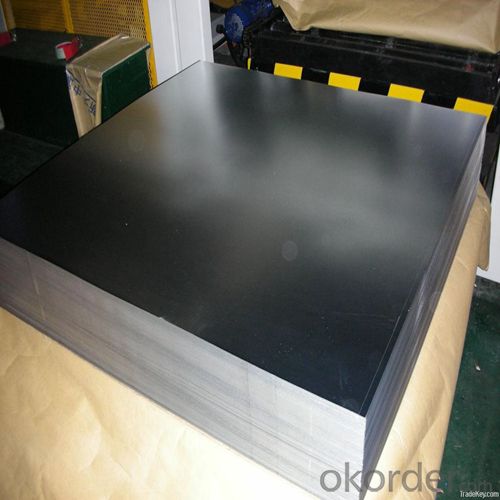
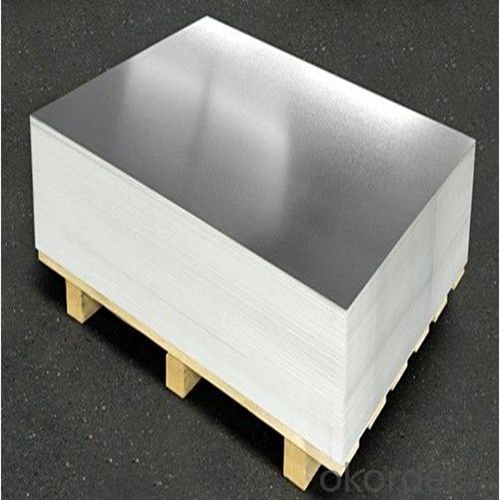
4.Electrolytic Tinplate in Sheets for Tin Cans Making Specification
Standard | ISO 11949 -1995, GB/T2520-2000,JIS G3303,ASTM A623, BS EN 10202
|
Material | MR,SPCC |
Thickness | 0.15mm - 0.50mm |
Width | 600mm -1150mm |
Temper | T1-T5 |
Annealing | BA & CA |
Coil Inner Diameter | 508mm |
Weight | 6-10 tons/coil 1~1.7 tons/sheets bundle |
Passivation | 311 |
Oil | DOS |
Surface | Finish,bright,stone,matte,silver |
5.FAQ of Electrolytic Tinplate in Sheets for Tin Cans Making
- How are the Electrolytic Tin Plates specified?
The Electrolytic Tin Plates are specified as per the steel base, extent of tempering, the coating weight, annealing method and the surface finish.
- How many types there are for base steels?
The base steels are of three types: Type MR, L, D
- Q: What are the main factors affecting tinplate coil surface finish?
- The main factors affecting tinplate coil surface finish include the quality of the tin coating, the cleanliness of the substrate, the condition of the rolling mill, the temperature and pressure during the rolling process, the presence of impurities or contaminants, and the effectiveness of post-processing treatments such as annealing or tempering.
- Q: How does tinplate contribute to the overall versatility of packaging?
- Tinplate contributes to the overall versatility of packaging due to its inherent properties such as strength, durability, and corrosion resistance. It can be easily shaped into various forms and sizes, making it ideal for packaging different products. Tinplate also provides excellent protection against moisture, oxygen, and light, ensuring the safety and longevity of the packaged goods. Additionally, its compatibility with different printing techniques allows for attractive and informative designs, enhancing the overall appeal of the packaging.
- Q: What are the typical lead times for tinplate production?
- The typical lead times for tinplate production can vary depending on various factors, such as the complexity of the product, order quantity, and the production capacity of the manufacturer. However, on average, lead times for tinplate production can range from a few weeks to a couple of months. It is recommended to consult with the specific manufacturer for more accurate and up-to-date information regarding lead times.
- Q: What are the benefits of using tinplate for electrical components?
- Using tinplate for electrical components offers several benefits. Firstly, tinplate is corrosion-resistant, which helps to protect the components from moisture and other environmental factors that could lead to damage or malfunction. Secondly, tinplate has excellent conductivity, ensuring efficient and effective electrical flow within the components. Additionally, tinplate is a lightweight and durable material, making it ideal for use in electrical applications. Furthermore, tinplate is easily recyclable, making it a sustainable choice for manufacturers. Overall, utilizing tinplate for electrical components enhances their performance, longevity, and environmental sustainability.
- Q: How is tinplate tested for quality assurance?
- Tinplate is tested for quality assurance through various methods including visual inspection, measurement of physical properties, assessment of coating quality, and evaluation of corrosion resistance. These tests ensure that the tinplate meets the required standards and specifications before it is used for packaging or other applications.
- Q: How does tinplate contribute to the overall aesthetics of packaging?
- Tinplate contributes to the overall aesthetics of packaging by adding a sleek and premium look to products. Its smooth surface and high reflectivity enhance the visual appeal, making the packaging stand out on shelves. Additionally, the ability to print vibrant colors and intricate designs on tinplate further enhances the attractiveness of the packaging, making it visually appealing to consumers.
- Q: Raw material for zinc clad sheet? Can zinc clad plate replace tinplate?
- What is the meaning of zinc coated plate, is galvanized plate, galvanized sheet and tinplate is completely different, different materials, galvanized plate is carbon steel, tinplate is high-quality steel and tinplate is tin, zinc galvanized plate.
- Q: What are the typical transportation requirements for tinplate?
- The typical transportation requirements for tinplate include ensuring proper packaging and protection to prevent damage during handling and shipment. Tinplate is commonly transported in rolled or flat sheets, coils, or fabricated containers, depending on the specific product and its intended use. It is crucial to handle tinplate with care to avoid scratches, dents, or corrosion that could impact its quality. Additionally, proper labeling and documentation are necessary to comply with regulatory and customs requirements during transportation.
- Q: How is tinplate different from other types of metal packaging?
- Tinplate is different from other types of metal packaging, such as aluminum or steel, primarily because it is made from thin sheets of steel coated with a layer of tin. This tin coating provides several advantages, including corrosion resistance, enhanced shelf life, and a glossy appearance. Additionally, tinplate is lightweight, malleable, and easy to shape, making it suitable for various packaging applications.
- Q: What are the different ways to recycle tinplate closures?
- There are several different ways to recycle tinplate closures. One way is to separate the tinplate from other materials, such as plastic or glass, and then melt it down to create new tinplate products. Another method is to crush the closures into small pieces and use them as aggregate in construction materials like concrete. Tinplate closures can also be reprocessed and used in the production of new closures or other metal products. Additionally, recycling facilities may accept tinplate closures and send them to specialized recycling centers for further processing.
Send your message to us
Electrolytic Tinplate in Sheets for Tin Cans Making
- Loading Port:
- Tianjin
- Payment Terms:
- TT OR LC
- Min Order Qty:
- 25 m.t
- Supply Capability:
- 7000 m.t/month
OKorder Service Pledge
OKorder Financial Service
Similar products
Hot products
Hot Searches
Related keywords

